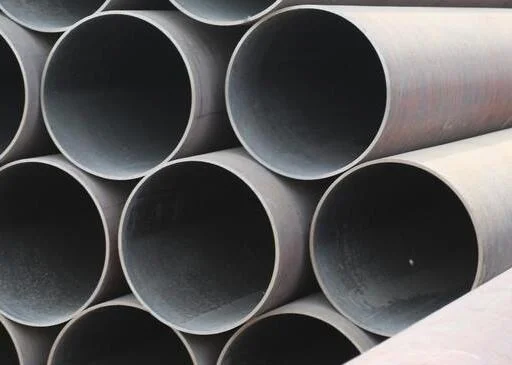Common defects and prevention of welded pipe
Defects produced in the actual production of high-frequency welded pipes are sometimes not caused by one cause, but are usually the result of a combination of multiple factors. Welding defects may also be caused by other reasons outside the welding area, so many factors should be considered comprehensively for defects , The problem can be solved only by carefully analyzing the reasons.

Inclusions
The formation mechanism of inclusion defects is that the metal oxide is not extruded with the molten metal, but is sandwiched on the welding surface.
These metal oxides are usually formed on the surface of the molten metal at the V angle. When the strip edge approaching speed is lower than the melting speed, and the melting speed is higher than the discharge speed of the molten metal, the apex of the V-shaped opening will form a molten metal and The inclusion of metal oxides cannot be completely discharged after normal extrusion. The surface of the clean metal solution is doped with these metal oxides, thus forming defects in the forging and welding process.
This defect will cause the weld to crack after being flattened, and inclusions will be seen at the fracture of the weld. This defect exists in different forms, sometimes single, sometimes in a chain.
Preventive measures for inclusion defects:
1. The V-shaped angle is strictly controlled within 4 ~ 6
2. Unit adjustment to ensure stable opening angle length
3. The Mn/Si ratio in the chemical composition of the strip is greater than 8:1
4. Reduce the oxidation of the welding area
Pre-arc
This kind of defect is actually insufficient fusion caused by pre-arc. Usually, the burr or oxide scale and rust on the edge of the strip form a bridge before the apex of the V angle, which causes the short circuit to cause the current to jump and generate the pre-arc phenomenon, and the short-circuit current changes the current direction and reduces The heat at the V corner is reduced.
Defects caused by instantaneous shunting, a bright and flat plane fracture can be seen from the weld fracture, sometimes there is no strip edge burr or oxide scale, rust, etc., but too small V angle or too high voltage will also cause pre-arc phenomenon , This is caused by the high voltage discharge at the edge of the strip.
Preventive measures for pre-arc defects:
1. The V-shaped angle is strictly controlled within 4 ~ 6
2. The edge of the strip is clean, smooth and free of burrs
3. Keep the cooling water clean, control the flow direction of the cooling water, and try to avoid the direction V angle
Insufficient fusion
This defect is due to the fact that the edges of the two strips are heated but not completely fused, and a good weld is not formed. The direct cause of insufficient fusion is insufficient heat during welding. There are many related factors that lead to insufficient welding heat, such as high-frequency power. The output, V angle and heating length, the position of the magnet bar, the working conditions and cooling of the magnet bar, the size of the induction coil, the welding speed, etc., these factors influence each other, and the combined effect leads to such defects.
Preventive measures for insufficient fusion defects:
1. The matching of welding input heat and welding speed, the characteristics of the raw material of the tube blank
2. Working condition of magnetic bar
3. V angle and heating length
4. Induction coil specifications
The stability and good condition of the equipment are the basic conditions for avoiding defects. Perfecting the recording and analysis of process parameters can increase the quality of pipes.






